Seal Island Smugglers
“The best spot of ground in England for the smuggling trade” was the proud boast of a Selsey inhabitant during the 18th century. (Anon)
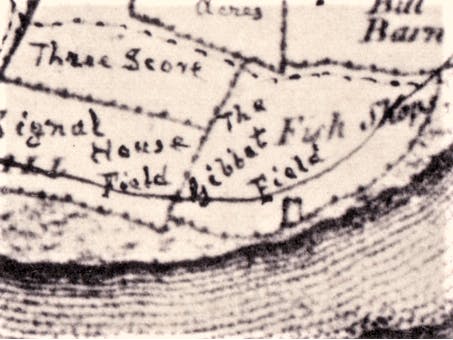
Smuggling Goods Into Europe
Away from prying eyes of the law - Selsey in its isolated position, then an island surrounded by water, with its abundance of flat, open landing sites - was the best spot to run a lucrative cross Channel smuggling operation from.
The origins of smuggling came about in the 14th century, with heavy restrictions and punitive taxes placed upon the export of wool. Contrary to belief, smuggling was initially an export business. Goods were moved by ‘owl light’ at dusk, hence why early smugglers were referred to as Owlers, later becoming known as Free traders. However, make no mistake, these were criminals who could be both violent and ruthless in their acts.
Image: Section of 1778 Yeakell and Gardners Map of Selsey with Annotations in 1906 by Covis Brown; taken from Selsey Bill: Historic & Prehistoric - Heron-Allen, 1911

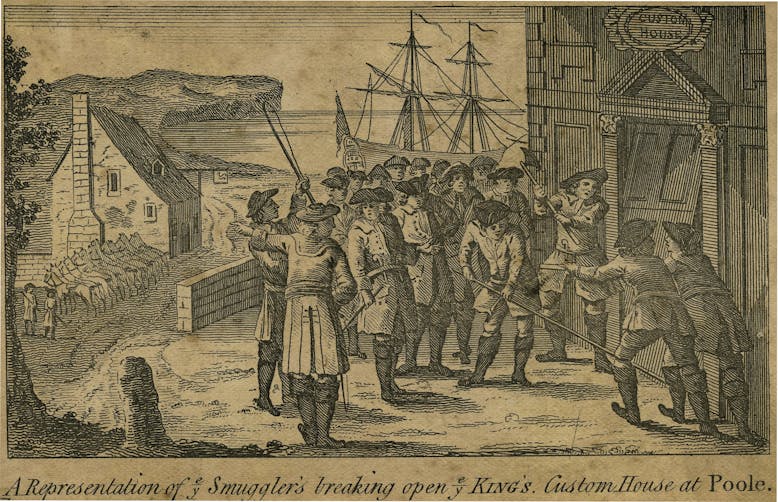
Smuggling Goods into England
By the 17th Century with sharply rising import duties financing Britain’s then frequent wars, the general scarcity of foreign luxuries with a focus on salt, wines, spirits, tea, silk and lace caused a shift towards smuggling goods inwards. Large profits were to be made from smuggling and its illegal business.
Smuggling continued to expand well into the 18th century and throughout Sussex large gangs were formed. At one stage up to 20,000 men in the County were said to be involved in the illicit trade! It is documented that by 1720 a regular weekly return service was being run out of Selsey to France. It is said that nightly convoys of wagons left from Selsey to the mainland.
Smuggling was the most profitable activity in the local area, over the course of 6 years one farmer is reputed to have made profits of £10,000 - the equivalent of £1.5 million in current values! In fact, the extent of the enterprise was such that all levels of society were involved either willingly or unwillingly.
Image courtesy of The Novium Museum, A representation of smuggler's breaking open ye King's Custom House at Poole.
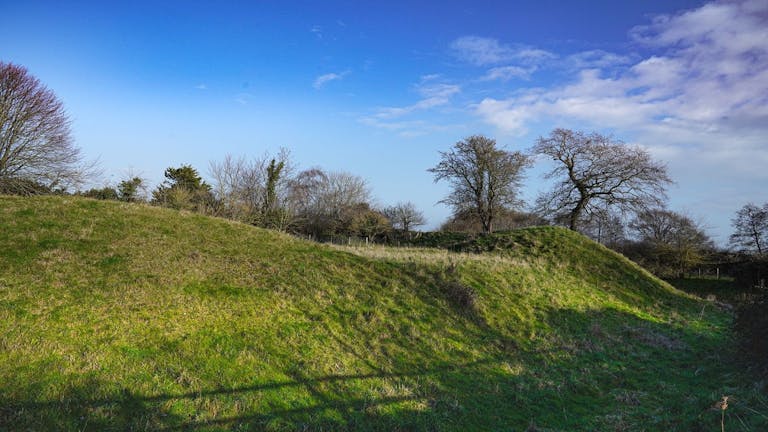
Selsey and Smuggling
Amongst the more willing were the clergy in Selsey who even imposed their own 10% tax on the contraband.
In the 19th century it has been said that the then Selsey Rector, Reverend Barre-Phipps and the Vicar, Edward Goddard in Sidlesham went out of their way to divert and confuse the authorities. One local story is of clergymen encouraging the local preventative officers to attend church services to allow for the smugglers to get on with their illicit work undisturbed! It is even believed that up until 100 years ago there was a secret tunnel from the Rectory to the Mound at Church Norton.
During the winter of 1826/7 four local Selsey men were caught smuggling - James Robinson, William Cook, William Bartlett and Edward Wade - imprisoned for their crime and had their boat seized.
Image of Church Norton Mound, courtesy of CoastalJJ.

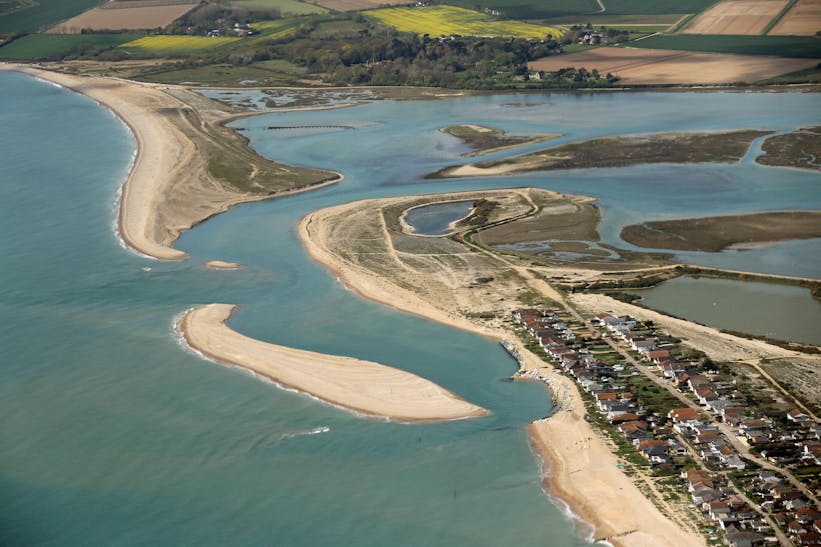
Joe Robinson (possibly a relative of the above-mentioned James), another Selsey man recalled in documents a large run of 700 tubs of contraband with a value of £1,100 - approximately £165,000 in today’s value - into the harbour during 1830 as the Preventative Guardsmen were distracted by lights and flashes elsewhere across the harbour.
He explained how the runs were financed with local men handing £5/£10 to a trusted intermediary - the “Will Watch” - who would sail to France and make arrangements.
In France a single use galley would be built with two small auxiliary sails to deliver the contraband to the waiting men of Selsey.
Smuggling gangs were most often manned by 50-100 people, each with a particular role to play. A Spotsman would direct the ship to shore, a Lander would arrange the transferring of the cargo, after which a Tubsman would carry the goods under the protection of a Batsman.
Image of aerial view of entrance to Pagham Harbour courtesy of John Akerman.
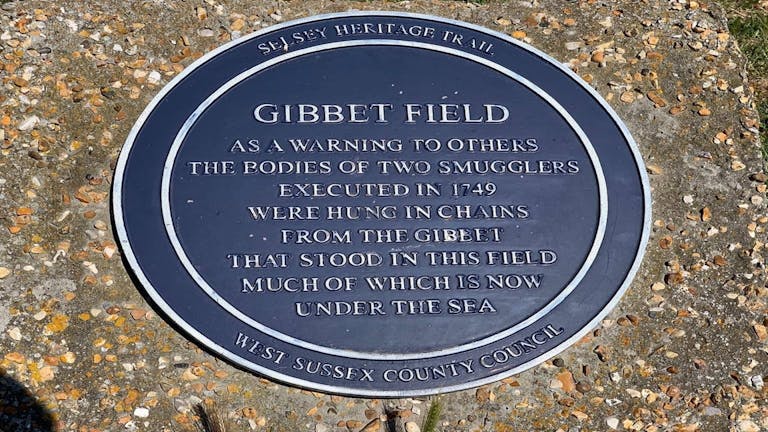
The Hawkhurst Gang
Perhaps the most notorious event in Selsey’s smuggling history occurred in 1749 when the bodies of 2 executed smugglers John Cobby of Sidlesham and John Hammond of Bersted, were brought to the town.
They were members of the infamous local Hawkhurst gang who, as part of a group of 7, had been found guilty of murder, but not of smuggling.
Hung at Chichester, their bodies were brought the 8 miles to Selsey to hang in chains as a warning to others. Their bodies were hung to decompose on high ground in the vicinity of a known landing spot for smuggled goods close to the shore and in full view of passing vessels.
The area became known as Gibbet Field, the actual spot where this took place that now lies beneath the sea. But this didn’t deter the illegal trade.
Nearby the area is a Blue Plaque plinth marking this event.
Image courtesy of CoastalJJ.

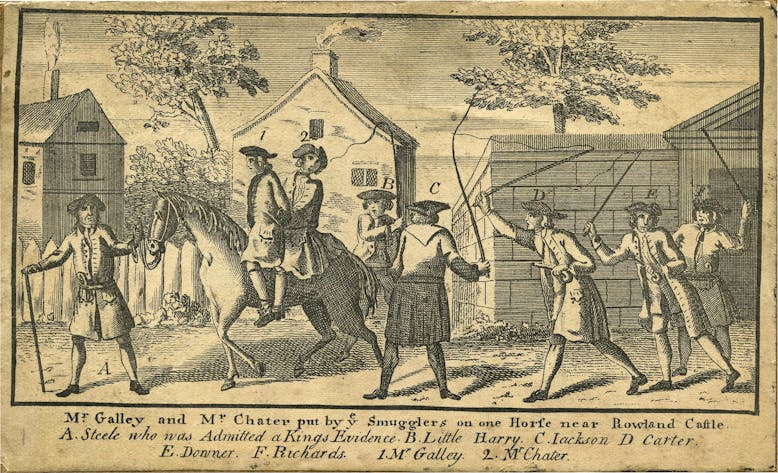
Attempts to Stop Smuggling
The authorities were desperate to stop the smugglers and loss of tax revenue. It is noted that in 1784 even the then Prime Minister, William Pitt the Younger suggested that of the 13 million pounds in weight drank in Britain that only the 5.5 million pounds in weight of tea had been purchased legally.
During the 14th century it was the town bailiff’s responsibility to suppress smuggling. By the 17th century a formal organization of Riding Officers and Revenue cutters evolved to combat smugglers. In the early 19th century an additional force was formed to address the issue of smuggling, the Preventative Waterguard.
Image courtesy of The Novium Museum, Mr Galley and Mr Chater put by ye Smuggler's on one Horfe near Rowland Castle.

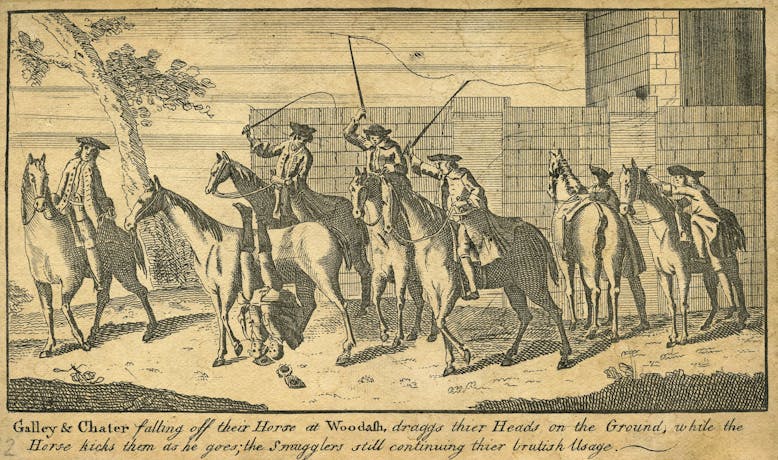
Attempts to Stop Smugglers in Selsey
Being the closest counties to the source of the illegal goods, Sussex and Kent were both seen as special cases in the fight against smuggling.
In 1817 the Royal Navy Coast Blockade Service came into existence. Selsey had a force of 25 officers and men together with their families imposed on the town. Like all previous attempts the Royal Navy failed to stop the smugglers and in 1831 they were stood down.
By 1822 the Waterguard, Riding Officers and Revenue Cutters had all been amalgamated to form HM Coastguard. It was now the HM Coastguard at Selsey that had responsibility for the persecution of the smugglers.
All attempts at stopping the smugglers failed and it was only when import taxes were dropped/repealed that a period of prolonged peace took hold, the risks of smuggling began to heavily outweigh the money to be made.
By 1850 the violence, intimidation and accompanying confrontation of smuggling was at an end.
Image courtesy of The Novium Museum, Galley and Chater falling off thier Horse at Woodalh draffs their heads on the ground.


